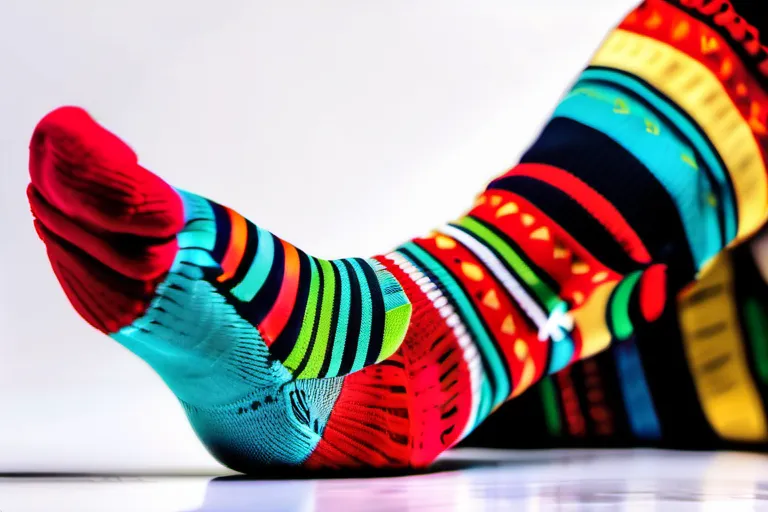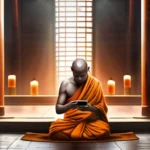Explore the history, beliefs, and practices of the unique Sock Religion.
Delve into the fascinating world of Sock Religion, a faith that has captivated followers for centuries. From its origins to its modern-day practices, this article provides a comprehensive overview of this intriguing belief system.
The Origins of Sock Religion
Imagine a world where socks aren’t just worn to keep your feet warm, but are revered as sacred beings with their own spiritual significance. That’s the essence of Sock Religion, an ancient and mystical practice that traces its roots back centuries. Have you ever wondered about the origins of this unique faith?
The history of Sock Religion is shrouded in mystery, much like a well-aged sock in your laundry basket. Some scholars believe it began with early civilizations who wore simple footwear to protect their feet from harsh terrains. Could these ancient peoples have developed a spiritual connection to their socks? It’s an intriguing thought that invites us to ponder the deep bonds we form with everyday objects.
During the medieval period, there are tales of sock-wearing monks and nuns who incorporated socks into their daily rituals. They would pray for the health of their feet by offering socks to saints, weaving them into intricate patterns, or wearing special pairs during important religious ceremonies. These practices hinted at a deeper reverence for these humble garments.
As time progressed, Sock Religion began to evolve. By the 18th century, it had spread across different cultures, each with its unique interpretations and traditions. Some communities saw socks as protectors against evil spirits, while others revered them as symbols of wealth and prosperity. The diversity in beliefs reflects the wide-ranging impact that socks have had on human societies.
Today, Sock Religion continues to thrive, though it may not be widely known or practiced outside certain communities. Its practices range from the simple act of wearing a special pair of socks during significant life events like weddings and births, to elaborate rituals involving sock blessings and offerings at holy sites dedicated to sock deities.
Through it all, Sock Religion remains a fascinating blend of practicality and spirituality. It teaches us that even the most mundane objects can hold profound meanings when viewed through the lens of faith. Who would have thought that something as ordinary as a sock could become an integral part of religious life?
The origins of Sock Religion are but a glimpse into the rich tapestry of human belief systems, reminding us to appreciate the simple things in life and the stories they carry within them.
Beliefs and Practices
Sock Religion, much like any other faith, has its own set of beliefs and practices that define it. But what exactly do these beliefs entail? Are they as intricate and profound as the ones found in more established religions?
At the heart of Sock Religion lies a belief in the sacred nature of socks—those humble garments that often go unnoticed until we miss them most. Many adherents believe that socks possess magical properties, protecting their wearers from discomfort and embarrassment, much like how a shield protects a knight on the battlefield.
Rituals in Sock Religion are simple yet deeply personal. One common practice is the sock blessing ceremony. This involves placing your socks under a pillow at night, whispering prayers for comfort and protection, before slipping them back on in the morning. The act of donning one’s socks can be seen as a daily reaffirmation of faith.
Another significant practice is the sock sharing ritual, where members exchange pairs during festivals to symbolize community bonding and the idea that we are all connected by our need for comfort and protection. This ritual underscores the belief in shared human experiences and the importance of mutual support within the faith.
The core beliefs of Sock Religion revolve around the concept of sock stewardship. Adherents believe that socks, like any other garment, should be treated with respect and care. The act of mending or washing a sock is seen as an act of reverence, akin to cleaning one’s soul.
In essence, Sock Religion is not just about the physical act of wearing socks but also about the spiritual journey that comes with them. It’s about finding comfort in the mundane and discovering profound truths within simple objects. The next chapter will delve deeper into how these beliefs manifest through the symbolic significance of socks, but for now, ponder on this: can a sock truly hold such deep meaning?
The Role of Socks in Sock Religion
Why do socks hold such a profound significance in Sock Religion? Could it be that they embody more than just mere foot coverings, acting as portals to spiritual realms? In this exploration, we delve into the symbolic importance of socks within the faith.
Socks, in Sock Religion, are often seen not just as everyday accessories but as vessels of protection and communication. They symbolize a barrier between the tangible world and the ethereal planes where spiritual entities reside. Just like how socks keep our feet warm and protected, they also shield us from unseen forces that might interfere with our spiritual journeys.
Consider the act of wearing socks: it’s a personal yet communal ritual. Each sock is unique, just as every individual in Sock Religion is seen as having their own sacred path. Yet, when we wear them together, forming a pair, it’s like uniting not only our feet but also our spirits in a shared journey.
Moreover, socks often bear patterns and colors that hold specific meanings within the faith. A single stripe might represent a pilgrim’s step on their sacred path, while vibrant hues can symbolize the diversity of spiritual experiences. These symbols are woven into the fabric of daily life, serving as reminders of our interconnectedness with both the divine and each other.
So, next time you slip your feet into a pair of socks, perhaps take a moment to reflect on their deeper meaning within Sock Religion. Are they merely keeping your toes warm or are they part of a much larger spiritual tapestry?
Sock Religion Communities Around the World
Imagine walking into a small, dimly lit room filled with socks of every color and size. In this space, devotees of Sock Religion gather, not for worship in a traditional sense, but to find comfort and connection through their shared love for these humble yet versatile items. This chapter delves into the global presence and unique characteristics of Sock Religion communities around the world.
From bustling cities like Tokyo, where sock exchanges are a common sight at flea markets, to serene villages in rural India, where sock-making is an art form passed down through generations, these communities share a universal language of comfort and care. Each pair of socks represents more than just foot coverings; they symbolize unity and shared experiences.
One can find Sock Religion gatherings in unexpected places—online forums dedicated to sock knitting patterns or local meet-ups where enthusiasts exchange tips on the best brands and materials. These communities thrive not only through physical meetings but also through digital platforms, proving that socks transcend geographical boundaries and bring people together.
The unique characteristics of each community reflect their local culture and traditions. In Japan, for instance, there is a deep appreciation for functional yet stylish socks, often seen as fashion statements in everyday life. Meanwhile, in the Netherlands, sock knitters come together to create intricate designs, showcasing the artistic side of this faith.
What ties these diverse communities together? The simple answer might be their shared belief in the power and comfort of socks. Just like how a single thread can weave through fabric, creating strength and resilience, so too do socks provide support and protection. They remind us that sometimes, the simplest items hold the greatest significance.
As we explore these communities further, we uncover the rich tapestry of human connection and tradition that is Sock Religion. Each pair of socks worn or shared becomes a piece in this intricate mosaic, reflecting the global love for these humble yet transformative objects. Could it be that through our shared passion for socks, we find a deeper understanding of what it means to care for one another?
The Influence of Sock Religion on Modern Culture
How has Sock Religion influenced modern culture, you might wonder? Just like how religion shapes societies and beliefs, this quirky faith has left its mark on various aspects of contemporary life. Have you ever seen a sock-themed art piece in an upscale gallery or caught a glimpse of colorful socks adorning the runway at Paris Fashion Week?
Sock Religion’s impact on modern culture can be felt through the lens of contemporary art. Artists have embraced this faith, creating works that explore the symbolic and emotional significance of socks. Could it be that these simple foot coverings hold deeper meanings when viewed through the eyes of a Sock Religion believer? Just like how paintings depict religious figures to convey divine messages, sock-themed art pieces often carry hidden spiritual narratives.
In fashion, Sock Religion has revolutionized how we think about accessories. Once seen as merely functional items, socks are now showcased in avant-garde collections and high-street stores alike. Could this be a reflection of society’s growing appreciation for individuality and self-expression? Are we witnessing the birth of a new trend where personal style is intertwined with deeper meanings?
The influence of Sock Religion extends beyond art and fashion into broader societal discussions about identity, tradition, and innovation. As more people explore their own spiritual paths in unconventional ways, it’s no surprise that socks have become a symbol of rebellion against conventional norms. Are we seeing a shift where traditional religious symbols are being replaced by everyday items as expressions of faith?
From street artists painting sock murals on buildings to fashion designers featuring sock-inspired collections, Sock Religion continues to weave itself into the fabric of modern culture. Could this be just the beginning? How will it evolve in the future and continue to impact how we perceive religion and personal expression?
In conclusion, the influence of Sock Religion on contemporary art, fashion, and society is a testament to its unique power. It challenges us to look beyond the surface level and explore deeper meanings behind simple objects. As we navigate through these cultural shifts, one thing is certain: the story of Sock Religion is far from over.
The Future of Sock Religion
As we delve into the future of Sock Religion, one might wonder, can socks truly stand the test of time in our rapidly evolving world? Could they remain not just a quirky fashion statement but also a significant spiritual force? The answer lies in understanding the adaptability and deep-rootedness of this unique faith.
Imagine Sock Religion as a tree with its roots deeply embedded in the cultural soil. Its branches, representing the diverse practices and beliefs, stretch across various communities. As we look ahead, how will these branches grow stronger or perhaps even sprout new leaves? Will socks continue to be mere fashion accessories or transform into symbols of unity and diversity?
One could speculate that Sock Religion might see a rise in virtual worship, where participants gather online to discuss the latest sock trends and their spiritual significance. This digital platform would allow for a global congregation, breaking down geographical barriers and fostering a sense of community among believers.
Another possibility is the integration of socks into mainstream religious practices. Could we envision a future where churches or temples incorporate sock-themed services, perhaps with special sock blessings or even sock-themed liturgies? This could not only attract new followers but also deepen the spiritual connection for existing members.
Moreover, as the world becomes more environmentally conscious, Sock Religion might emphasize sustainable practices. Perhaps there will be a push towards recycling old socks into eco-friendly products, turning waste into a sacred act of environmental stewardship. This could further solidify the sock as a symbol of not just spiritual significance but also ecological responsibility.
Will socks become a global language, transcending cultural and linguistic barriers? Could the humble sock become a universal symbol of unity, much like how handshakes or hugs can bridge gaps between people? The potential is vast, and only time will tell where this unique religion might lead us.
In the end, Sock Religion may not just survive but thrive, adapting to the ever-changing landscape of society. Will you be part of its journey, embracing the sock as both a fashion statement and a spiritual emblem? The future is uncertain, yet the possibilities are endless.
Conclusion
 In conclusion, Sock Religion offers a unique perspective on spirituality and community. By understanding its history and practices, we can appreciate the richness and diversity of human beliefs.
In conclusion, Sock Religion offers a unique perspective on spirituality and community. By understanding its history and practices, we can appreciate the richness and diversity of human beliefs.











